
《保险研究》20210602-《我国金融机构的系统风险重要性研究——基于Clayton Copula函数方法和MST网络模型》(余博、邹宇翔、管超)
[中图分类号]F832.3;F832.5[文献标识码]A[文章编号]1004-3306(2021)06-0011-17 DOI:10.13497/j.cnki.is.2021.06.002
资源价格:30积分
- 内容介绍
[摘 要]目前,我国金融监管部门对于系统重要性金融机构的监管主要聚焦于银行,对于金融机构系统风险的确定和评估则主要关注机构的规模和结构特征,尚未从机构的风险传染状况及定价估值水平等视角进行考量。对此,本文采用学界新晋发展的Clayton Copula函数方法和MST网络模型,构建我国主要金融机构的下尾依赖网络;结合网络拓朴指标,从社区结构、集中度、分部门等维度综合评估我国上市金融机构的系统风险重要性;通过标准化树长探讨2008年国际金融危机对系统风险传染的结构性影响。研究结果表明:一是我国金融机构具有显著的网络社区结构特征,其中系统风险重要性最强的是证券公司和保险公司组成的社区,股份制商业银行和金融控股公司亦具有较高的关联度;二是金融机构节点在风险传染中呈现出差异化的作用性质,部分规模较小的机构具备超越其规模的重要性,东北证券、光大证券、广发证券和中信证券是风险传染的重要性节点;三是金融危机加剧了风险在网络中的传染性,也改变了金融机构的网络结构与系统风险重要性排序。本文研究为监管部门多角度考量金融机构风险重要性、完善系统重要性机构名单以及实施多维度梯度监管措施提供理论依据和新的思路。
[关键词]系统风险重要性;风险传染;Clayton Copula函数方法;MST网络模型
[基金项目]国家社会科学基金青年项目“金融扩大开放部署下我国金融风险传导及防控研究”(20CJY065);江苏省高等学校自然科学研究面上项目“金融扩大开放部署下跨境金融市场风险传染及防控研究”(20KJB630001)。
[作者简介]余博,南京财经大学金融学院讲师、硕士生导师,现代服务业智库研究员,主要研究方向为国际金融与宏观金融管理、金融计量学;邹宇翔,现就读于南京财经大学金融学院,主要研究方向为金融风险管理、金融计量;管超(通讯作者),中国人民银行深圳市中心支行政策研究员,主要研究方向为金融风险管理、政府行为。
A Research on the Systemic Risk Importance of Financial Institutions in China—Based on Clayton Copula Functional Method and MST Network Model
YU Bo,ZOU Yu-xiang,GUAN Chao
Abstract:At present,the supervision of systemically important financial institutions by China’s financial regulatory authorities mainly targets at the banking sector.The determination and assessment of systemic risks of financial institutions mainly focusses on the scale and structure characteristics of the institution,and the pricing/valuation level and risk contagion perspectives have not been considered yet.In this regard,the paper adopted the latest development of Clayton Copula method and MST network model to construct the lower tail dependence network of China′s financial institutions.Then,through network topology indicators(e.g. community structure, concentration, and sub-sector analysis),it comprehensively evaluated the systemic risk importance of the publicly listed financial institutions.In addition,the paper also explored the structural impact of the 2008 international financial crisis on the systemic risk contagion through standardized tree length indicator.The paper reaches the following conclusions.First, China’s financial institutions network has significant community structure characteristics. Among them, the riskiest community is composed of securities companies and insurance companies. Joint-stock commercial banks and financial holding companies also have a high degree of relevance. Second, financial institutions nodes have different role in risk contagion and some smaller institutions are more important than their scale. Northeast Securities, Everbright Securities, GF Securities, and CITIC Securities are the important nodes of risk contagion. Third, the financial crisis increases the spread of risk in the financial network, and changes the network structure of financial institutions and the importance ranking of systemic risk.The research helps to provide the theoretical basis for the regulatory authorities to assess the risk importance of financial institutions from multiple perspectives,improve the list of systemically important institutions,and allocate regulatory resources with high accuracy.
Key words:systemic risk importance;risk contagion;Clayton Copula Functional Method;MST Network Model
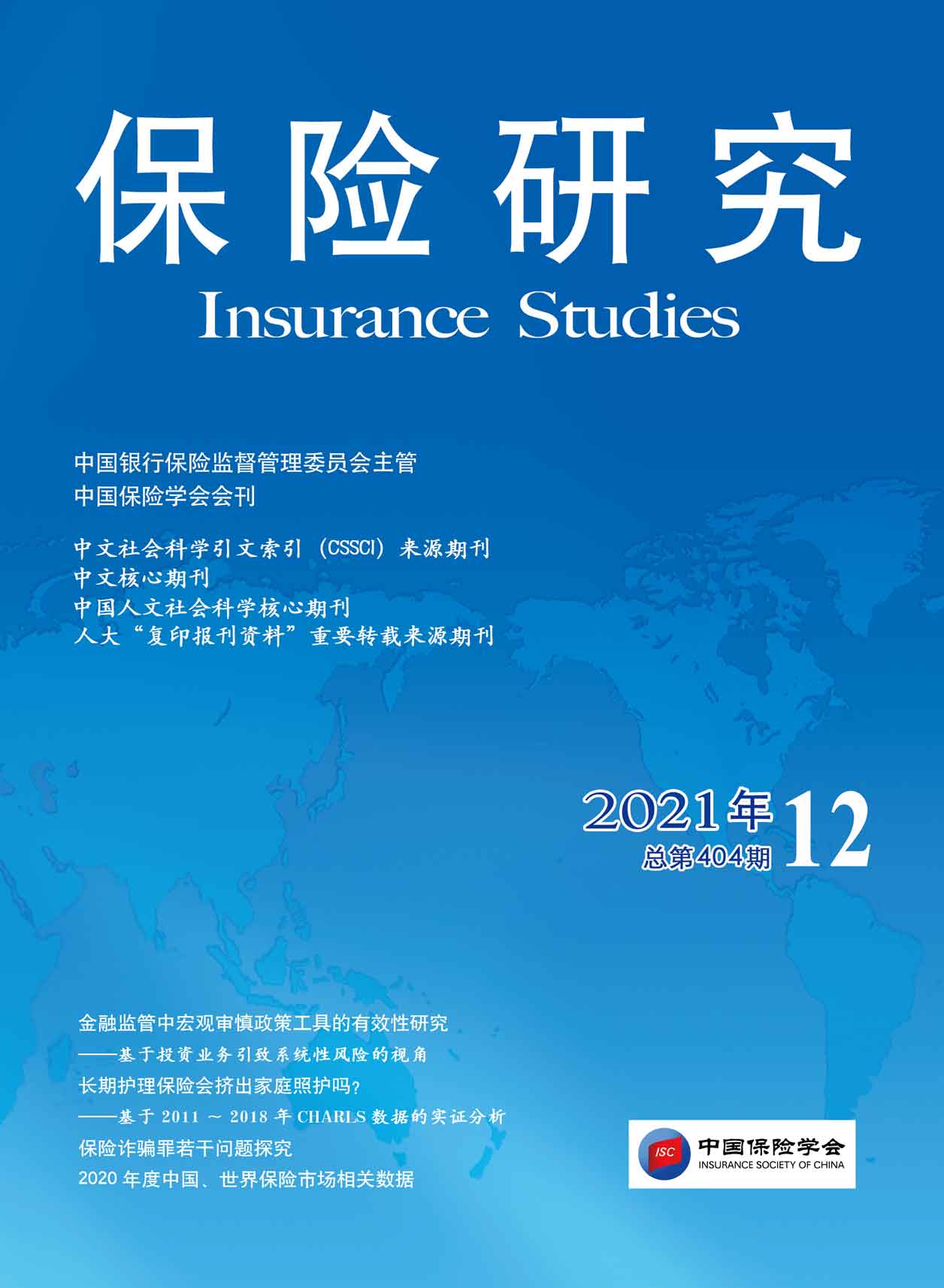
《保险研究》20211201-《金融监管中宏观审慎政策工具的有效性研究——基于投资业务引致系统性风险的视角》(邹奕格、粟芳)
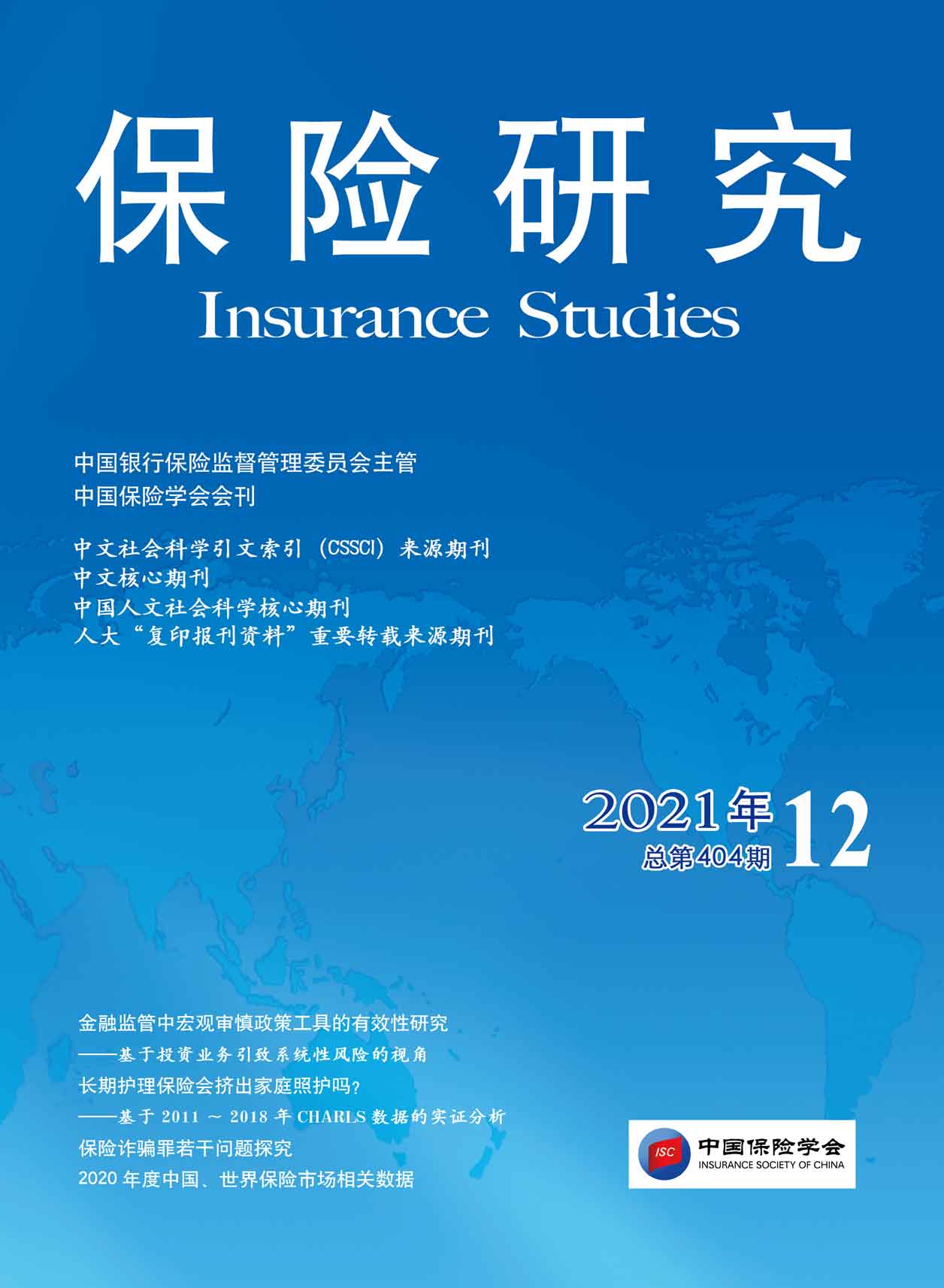
《保险研究》20211202-《长期护理保险会挤出家庭照护吗?——基于2011~2018年CHARLS数据的实证分析》(朱铭来、何敏)
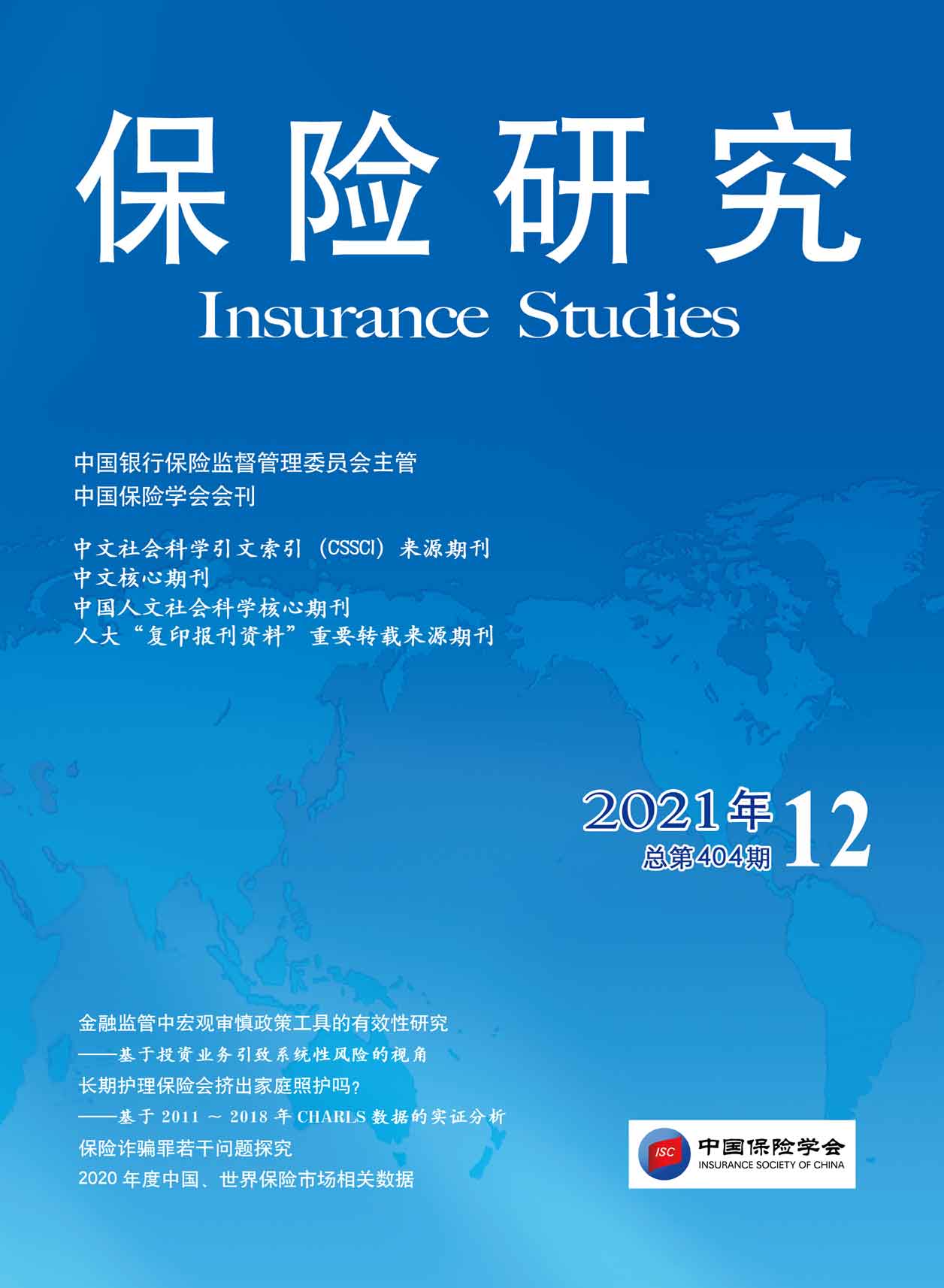
《保险研究》20211203-《参与农作物保险是否促进农户农地转入?——基于内蒙古的微观实证》(柴智慧)
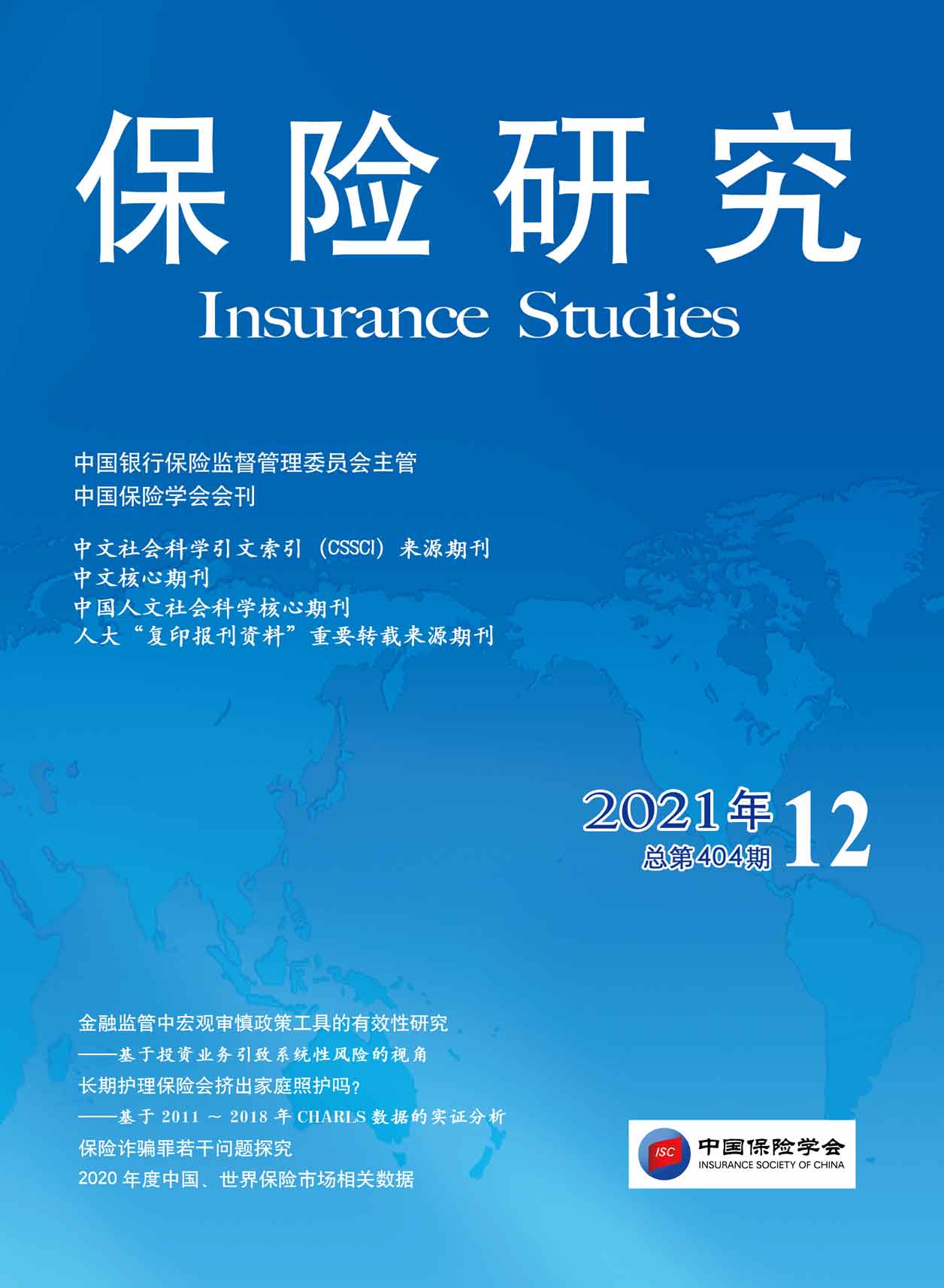
《保险研究》20211204-《环境污染责任保险与企业环境信息披露》(李敏鑫、王江寒)
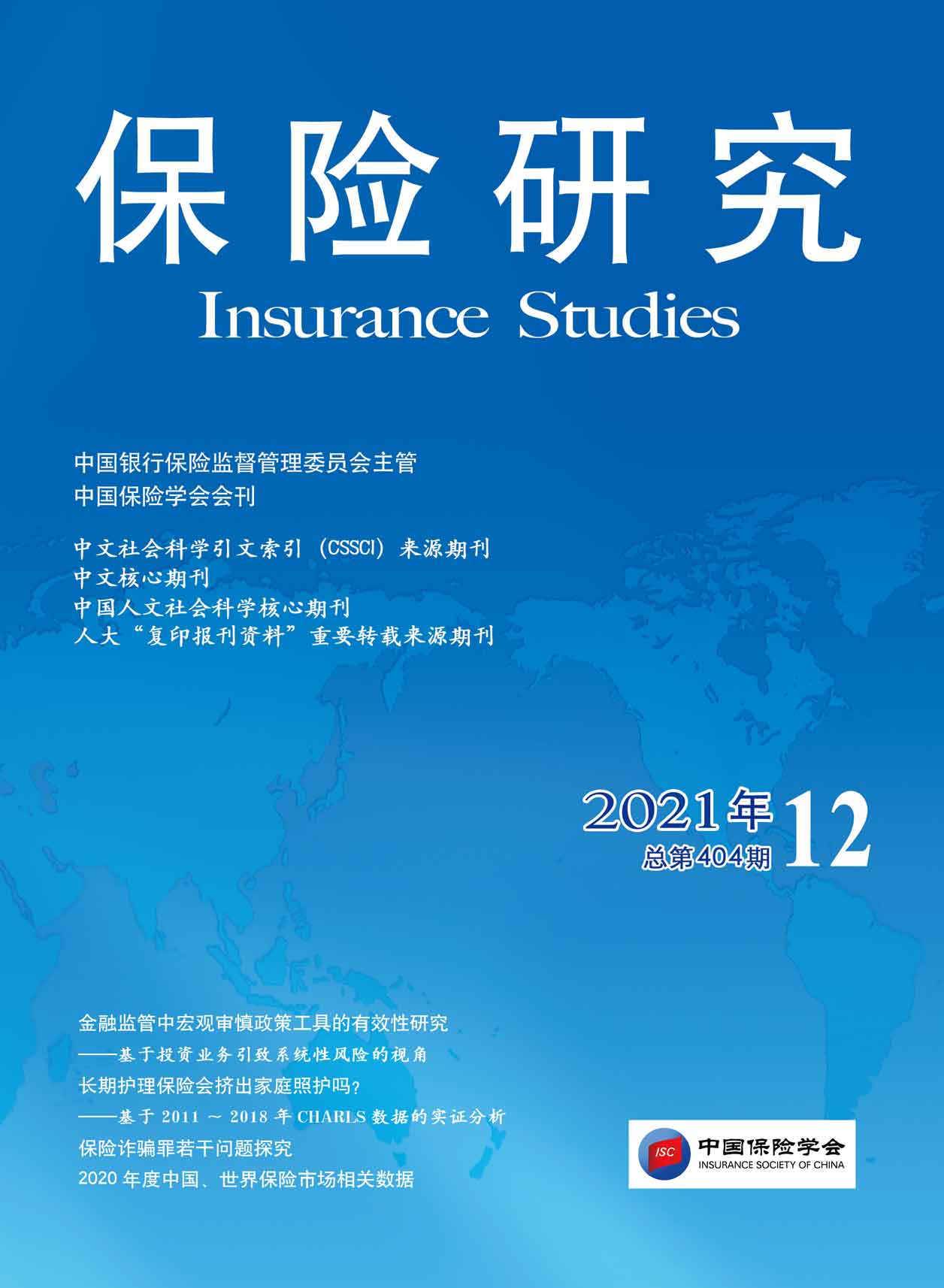
《保险研究》20211205-《保险诈骗罪若干问题探究》(曹顺明、杨润宇、赵瑛)
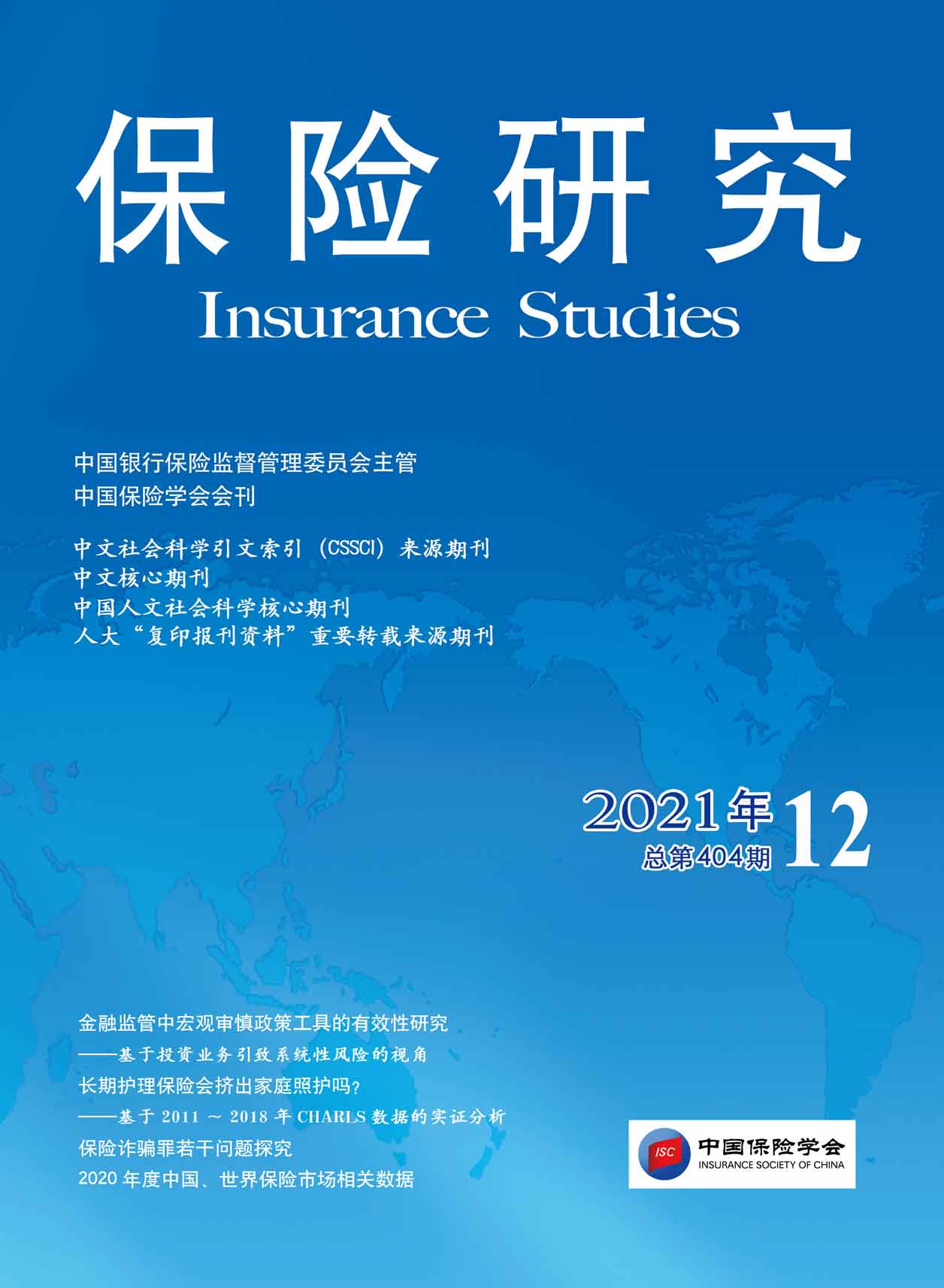
《保险研究》20211206-《<民法典>视野下保险合同第三人代缴保费问题研究》(王家骏)
